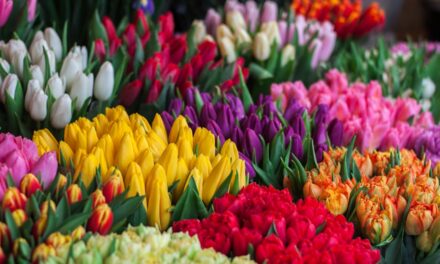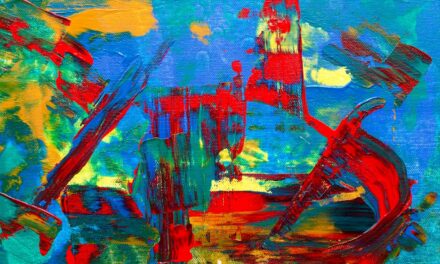Wet-on-dry watercolor painting is a technique that has captivated artists for centuries, offering a unique approach to the medium that allows for precision and clarity. Unlike the wet-on-wet method, where pigments are applied to a wet surface, wet-on-dry involves applying wet paint onto a dry paper surface. This technique is particularly favoured for its ability to produce sharp lines and defined edges, making it an ideal choice for artists who wish to create intricate details in their work.
The contrast between the fluidity of watercolour and the crispness of dry paper creates a dynamic interplay that can result in stunning visual effects. The allure of wet-on-dry painting lies not only in its technical advantages but also in the creative possibilities it presents. Artists can achieve a range of textures and tonal variations, allowing for a more controlled application of colour.
This method is particularly beneficial for those who wish to depict realistic subjects, such as landscapes or portraits, where precision is paramount. As we delve deeper into the materials and techniques associated with wet-on-dry watercolour painting, we will uncover the secrets that can elevate your artistic practice and enhance your ability to convey detail and depth in your work.
Summary
- Wet-on-dry watercolor painting involves applying wet paint onto a dry surface, allowing for more control and precision in creating detailed and crisp artwork.
- The key materials for wet-on-dry watercolor painting include high-quality watercolor paper, a variety of brushes, and vibrant watercolor paints, while techniques such as layering, glazing, and lifting are essential for achieving desired effects.
- Achieving crisp lines and sharp details in wet-on-dry watercolor painting requires using a fine-tipped brush, controlling the water-to-paint ratio, and mastering the art of dry brush technique.
- To create detailed effects in wet-on-dry watercolor painting, artists can use masking fluid, salt, or alcohol to add texture, as well as experiment with different brush strokes and blending techniques.
- Common mistakes to avoid in wet-on-dry watercolor painting include overworking the paint, using too much water, neglecting the importance of paper quality, and not allowing layers to dry properly.
Materials and Techniques for Wet-on-Dry Watercolor Painting
To embark on your journey into wet-on-dry watercolour painting, it is essential to gather the right materials. The choice of paper is crucial; a high-quality watercolour paper with a weight of at least 300 gsm is recommended. This type of paper can withstand the application of water without warping, allowing for clean lines and vibrant colours.
Additionally, selecting the right brushes is vital. A round brush with a fine tip is ideal for detailed work, while flat brushes can be used for broader strokes and washes. The quality of your watercolours also plays a significant role; professional-grade paints tend to have higher pigment concentrations, resulting in richer colours and better lightfastness.
Once you have assembled your materials, understanding the techniques involved in wet-on-dry painting is key to mastering this method. Begin by ensuring your paper is completely dry before applying any paint. This allows for greater control over the application and prevents unwanted bleeding of colours.
When loading your brush with paint, consider the water-to-pigment ratio; too much water can dilute the colour, while too little may lead to a chalky finish. It is advisable to practice layering techniques, where you allow each layer to dry before adding subsequent ones. This not only enhances the depth of your work but also enables you to create intricate details without muddying your colours.
Achieving Crisp Lines and Sharp Details
One of the hallmarks of wet-on-dry watercolour painting is the ability to achieve crisp lines and sharp details. To accomplish this, it is essential to master brush control and understand how to manipulate the paint on the paper. When applying paint, use the tip of your brush for fine lines, applying gentle pressure to create varying widths.
This technique allows for greater precision, particularly when rendering intricate elements such as foliage or architectural features.
This liquid latex product can be applied to areas of your painting that you wish to keep white or untouched by colour.
Once the masking fluid has dried, you can paint over it with your desired colours. After the paint has dried, simply remove the masking fluid to reveal clean, unpainted areas beneath. This technique is particularly useful for creating highlights or intricate patterns that require a high level of detail.
Tips for Creating Detailed Effects in Wet-on-Dry Watercolor Painting
Creating detailed effects in wet-on-dry watercolour painting requires both practice and an understanding of various techniques that can enhance your work. One effective method is the use of glazing, which involves applying thin layers of transparent colour over dried paint. This technique allows you to build depth and complexity in your artwork without losing the underlying details.
By carefully selecting your colours and layering them strategically, you can create rich tonal variations that add dimension to your piece. Another tip for achieving detailed effects is to experiment with dry brushing. This technique involves using a relatively dry brush with minimal paint to create texture and fine lines.
By lightly dragging the brush across the surface of the paper, you can produce delicate strokes that mimic natural textures such as fur or grass. Additionally, incorporating techniques such as splattering or sponging can add an element of spontaneity and interest to your work, breaking up areas of solid colour and introducing dynamic visual elements.
Common Mistakes to Avoid in Wet-on-Dry Watercolor Painting
As with any artistic endeavour, there are common pitfalls that artists may encounter when practising wet-on-dry watercolour painting. One frequent mistake is overworking the paint, which can lead to muddy colours and loss of detail. It is essential to know when to step back and allow layers to dry before making further adjustments.
Patience is key; rushing through the process can compromise the integrity of your work. Another common error is neglecting the importance of planning your composition. Before diving into painting, take time to sketch out your ideas and consider how you will approach each element of your piece.
This foresight will help you avoid unnecessary complications during the painting process and ensure that you maintain control over your details. Additionally, be mindful of your colour choices; using too many contrasting colours without consideration can lead to a disjointed appearance in your artwork.
Inspiration and Examples of Wet-on-Dry Watercolor Painting
Inspiration for wet-on-dry watercolour painting can be found in various sources, from nature to urban landscapes and even abstract concepts. Many artists draw upon their surroundings, capturing the intricate details of flowers, trees, or architectural structures through this technique. The ability to render fine details while maintaining a sense of fluidity makes wet-on-dry an excellent choice for botanical illustrations or cityscapes where precision is essential.
Examining the works of renowned artists who have mastered this technique can also provide valuable insights. For instance, artists like John Singer Sargent and Winslow Homer have employed wet-on-dry methods to create stunning landscapes and portraits that showcase their command over detail and colour. By studying their compositions and techniques, aspiring artists can glean inspiration and develop their own unique styles within this versatile medium.
Exploring Different Styles and Approaches in Wet-on-Dry Watercolor Painting
Wet-on-dry watercolour painting is not limited to a single style; rather, it encompasses a diverse range of approaches that artists can explore. Some may prefer a realistic style, focusing on capturing lifelike details with precision, while others might lean towards a more impressionistic approach that emphasises colour and form over strict accuracy. Experimenting with different styles allows artists to discover their preferences and develop a personal voice within their work.
Additionally, incorporating mixed media elements can further expand the possibilities within wet-on-dry painting. Artists may choose to combine watercolours with ink or pastels to create unique textures and effects that enhance their compositions. This fusion of techniques encourages creativity and innovation, allowing artists to push the boundaries of traditional watercolour painting while still benefiting from the crispness that wet-on-dry offers.
Mastering Wet-on-Dry Watercolor Painting for Detailed and Crisp Results
In conclusion, mastering wet-on-dry watercolour painting opens up a world of possibilities for artists seeking to achieve detailed and crisp results in their work. By understanding the materials and techniques involved, as well as learning how to avoid common mistakes, artists can refine their skills and elevate their artistic practice. The ability to create sharp lines and intricate details not only enhances the visual appeal of a piece but also allows for greater expression and storytelling within art.
As you continue on your journey with wet-on-dry watercolour painting, remember that practice is essential. Embrace experimentation and allow yourself the freedom to explore different styles and approaches. With dedication and perseverance, you will find that this technique not only enriches your artistic repertoire but also deepens your appreciation for the beauty and versatility of watercolour as a medium.
Whether you are capturing the delicate petals of a flower or the intricate architecture of a building, wet-on-dry painting offers an exciting avenue for artistic expression that invites both challenge and reward.
If you are interested in learning more about different painting techniques and styles, you may want to check out the article The Painter’s Palette. This article delves into the importance of colour choices and how they can impact the overall look and feel of a painting. Understanding how to use colour effectively can greatly enhance your artwork and help you achieve the desired effects. So, if you want to take your painting skills to the next level, be sure to give this article a read.


